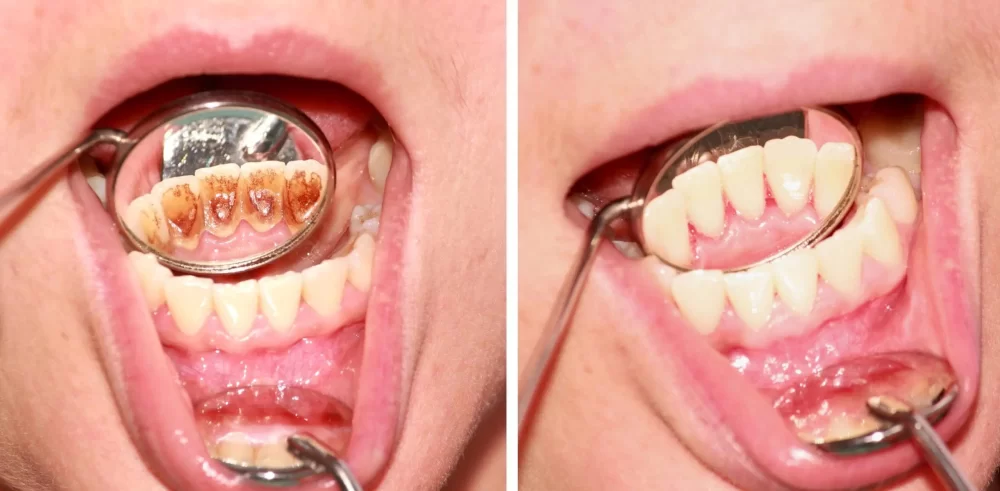
- Causes of Gum Inflammation After Dental Cleaning
- Symptoms and When to Worry
- Effective Methods to Treat Gum Inflammation
- Real-Life Experience with Post-Cleaning Gum Care
- Preventive Measures to Avoid Gum Inflammation
- Choosing the Right Products for Gum Recovery
Causes of Gum Inflammation After Dental Cleaning
After a professional dental cleaning, it is not uncommon to experience some degree of gum inflammation. This reaction is usually temporary but can be uncomfortable. Understanding why this happens is the first step in knowing how to treat gum inflammation after dental cleaning effectively.
Mechanical Irritation from Cleaning
Dental cleaning procedures, especially deep cleanings like scaling and root planing, can irritate the gums. The scraping of plaque and tartar beneath the gumline can cause minor trauma, leading to swelling and redness.
Pre-existing Gum Sensitivity
Patients with sensitive gums or underlying gingivitis may experience more pronounced inflammation after cleaning because their tissues are already inflamed or fragile.
Reaction to Dental Instruments or Products
Occasionally, the use of certain dental materials or antiseptics during cleaning may trigger mild irritation or allergic-like reactions, contributing to gum swelling.
Symptoms and When to Worry
Recognizing symptoms that are normal versus those that require professional attention is crucial.
Common Symptoms
Typical signs of gum inflammation after cleaning include mild swelling, tenderness, slight bleeding when brushing, and redness around the gums. These usually peak within a day or two and then improve.
Red Flags for Immediate Care
If symptoms worsen after three days, or if severe pain, pus, excessive bleeding, or fever develops, these could indicate infection or complications requiring prompt dental evaluation.
Effective Methods to Treat Gum Inflammation
Knowing how to treat gum inflammation after dental cleaning helps ease discomfort and supports healing. Here are detailed strategies:
1. Maintain Gentle Oral Hygiene
Continue brushing and flossing but avoid aggressive scrubbing. Use a soft-bristled toothbrush to clean gently around the inflamed areas to prevent further irritation.
2. Use Warm Saltwater Rinses
Rinsing the mouth with warm saltwater several times daily can reduce swelling and kill bacteria. Saltwater is a natural antiseptic that soothes irritated tissues effectively.
3. Apply Cold Compresses if Needed
If swelling is significant, applying a cold compress externally can reduce inflammation and numb discomfort.
4. Avoid Irritating Foods and Habits
Stay away from spicy, acidic, or hard foods that may aggravate inflamed gums. Also, avoid smoking or alcohol, which can delay healing.
5. Use Recommended Mouthwashes and Topical Gels
Antimicrobial mouthwashes prescribed or recommended by your dentist can help control bacterial buildup. In some cases, topical gels with soothing and healing agents provide additional relief.
Real-Life Experience with Post-Cleaning Gum Care
Jessica, a 34-year-old with a history of sensitive gums, shared her experience after a routine dental cleaning. She noticed her gums were swollen and tender for about three days. By following her dentist’s advice to rinse with saltwater and switch to a soft toothbrush, her discomfort subsided quickly without complications. This personal story illustrates how simple, consistent care can effectively manage gum inflammation after dental cleaning.
On the other hand, Mark, who ignored mild gum pain post-cleaning and continued eating spicy foods, developed an infection requiring antibiotic treatment. This case reinforces the importance of timely and appropriate care.
Preventive Measures to Avoid Gum Inflammation
Prevention is always better than cure. Taking proactive steps before and after dental cleanings can minimize gum inflammation risks.
Schedule Regular Cleanings and Check-ups
Maintaining a consistent cleaning schedule keeps plaque and tartar buildup under control, reducing irritation during each cleaning session.
Communicate with Your Dentist
Inform your dentist about any gum sensitivity or previous reactions. This helps them tailor cleaning techniques and recommend suitable products.
Practice Excellent Daily Oral Care
Good brushing, flossing, and using dental aids prevent gum disease, making your gums more resilient to cleaning procedures.
Choosing the Right Products for Gum Recovery
For those seeking effective and gentle products to support healing, Dentistry Toothtruth offers a carefully selected range of oral care items tailored for gum health. From soft-bristle toothbrushes to soothing mouthwashes and healing gels, their selection can help accelerate recovery after dental cleaning and reduce inflammation risks in the future.
Integrating these products with proper post-cleaning care routines ensures the best outcomes for gum health and comfort.







 Perth Amboy Pediatric Dentistry & Orthodontics4.0 (455 review)
Perth Amboy Pediatric Dentistry & Orthodontics4.0 (455 review) Poldek Family Dental of South Barrington4.0 (216 review)
Poldek Family Dental of South Barrington4.0 (216 review) Dr. Daniel T. Chung, DDS5.0 (24 review)
Dr. Daniel T. Chung, DDS5.0 (24 review) Community Health Care Hilltop Family Dental Clinic3.0 (188 review)
Community Health Care Hilltop Family Dental Clinic3.0 (188 review) Ardsley Dental Spa: Hinna Chaudhry, DMD4.0 (283 review)
Ardsley Dental Spa: Hinna Chaudhry, DMD4.0 (283 review) Smiles of Elgin4.0 (46 review)
Smiles of Elgin4.0 (46 review) The Importance of Oral Health Education During Pregnancy for a Healthy Pregnancy
The Importance of Oral Health Education During Pregnancy for a Healthy Pregnancy Best Tips for Brushing Your Teeth Properly for Healthy Gums: Essential Techniques for Oral Health
Best Tips for Brushing Your Teeth Properly for Healthy Gums: Essential Techniques for Oral Health Why Skipping Dental Checkups Can Lead to Bigger Oral Health Problems
Why Skipping Dental Checkups Can Lead to Bigger Oral Health Problems Advantages of Porcelain Dental Restorations
Advantages of Porcelain Dental Restorations How Can Diabetes Cause Tooth and Gum Problems? Preventing and Managing Oral Health Issues
How Can Diabetes Cause Tooth and Gum Problems? Preventing and Managing Oral Health Issues Healthy Habits for Promoting Good Oral Health and Hygiene: Tips for a Healthy Smile
Healthy Habits for Promoting Good Oral Health and Hygiene: Tips for a Healthy Smile